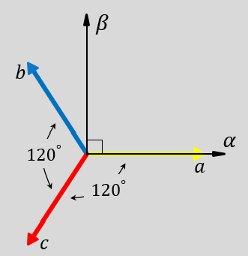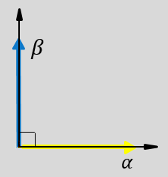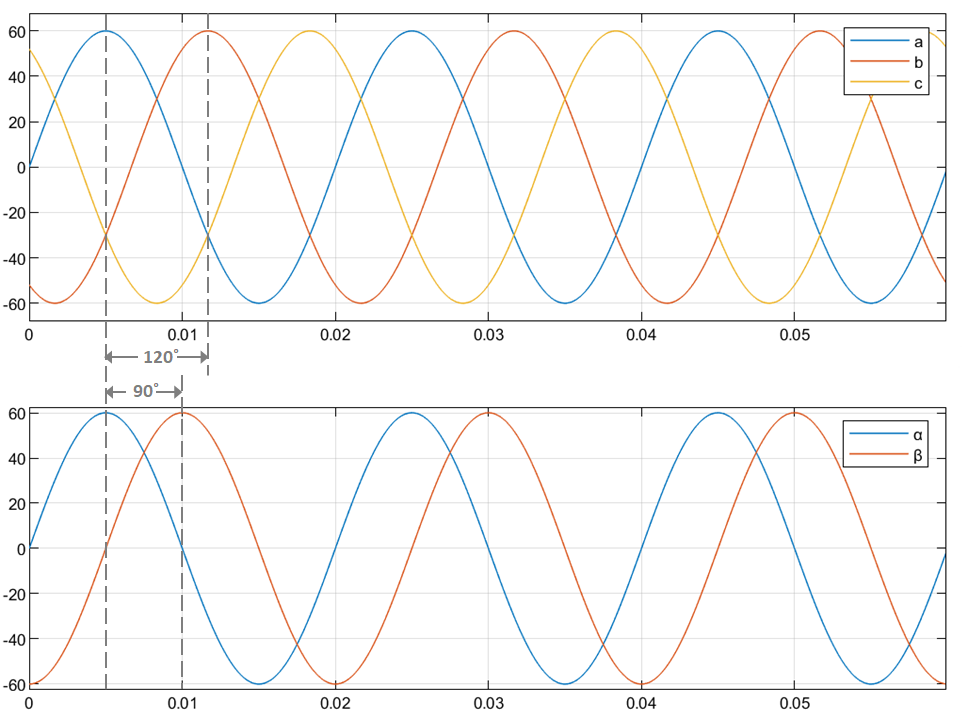Clarke Transform
ab から αβ への変換の実装
ライブラリ:
Motor Control Blockset /
Controls /
Math Transforms
Motor Control Blockset HDL Support /
Controls /
Math Transforms
説明
Clarke Transform ブロックは、abc 基準座標系における平衡三相成分の Clarke 変換を計算し、静止 αβ 基準座標系における平衡二相直交成分を出力します。あるいは、このブロックは三相成分 a、b、c の Clarke 変換を計算し、成分 α、β、0 を出力できます。平衡システムの場合、ゼロ成分はゼロに等しくなります。[入力数] パラメーターを使用して 2 つまたは 3 つの入力を使用します。
2 入力構成を使用する場合、ブロックは三相 (abc) から 2 つの信号を受け取り、3 番目の信号を自動的に計算して、αβ 基準座標系における対応する成分を出力します。
たとえば、a 相の軸が α 軸と揃っている場合、ブロックは入力値 a および b または多重化された入力値 abc を受け取ります。
次の図は、abc 基準座標系と静止 αβ 基準座標系における固定子巻線の磁気軸の向きを示しています。

次の図は、静止 αβ 基準座標系における同等の α 成分と β 成分を示しています。

同等の平衡な abc システムと αβ システムの各成分の時間応答です。

方程式
Clarke 変換の計算は次の方程式で記述されます。
モーターのような平衡システムの場合、ゼロ相成分の計算は常にゼロになります。たとえば、モーターの電流は次のように表すことができます。
したがって、三相モーター ドライブで使用できる電流センサーは 2 つだけです。ここで、3 番目の相は次のように計算できます。
これらの方程式を使用して、このブロックは Clarke 変換を次のように実装します。
ここで、
、、 は、abc 基準座標系における平衡三相成分です。
と は、静止 αβ 基準座標系における平衡二相直交成分です。
は、静止 αβ 基準座標系におけるゼロ成分です。
例
端子
入力
出力
パラメーター
拡張機能
バージョン履歴
R2020a で導入

